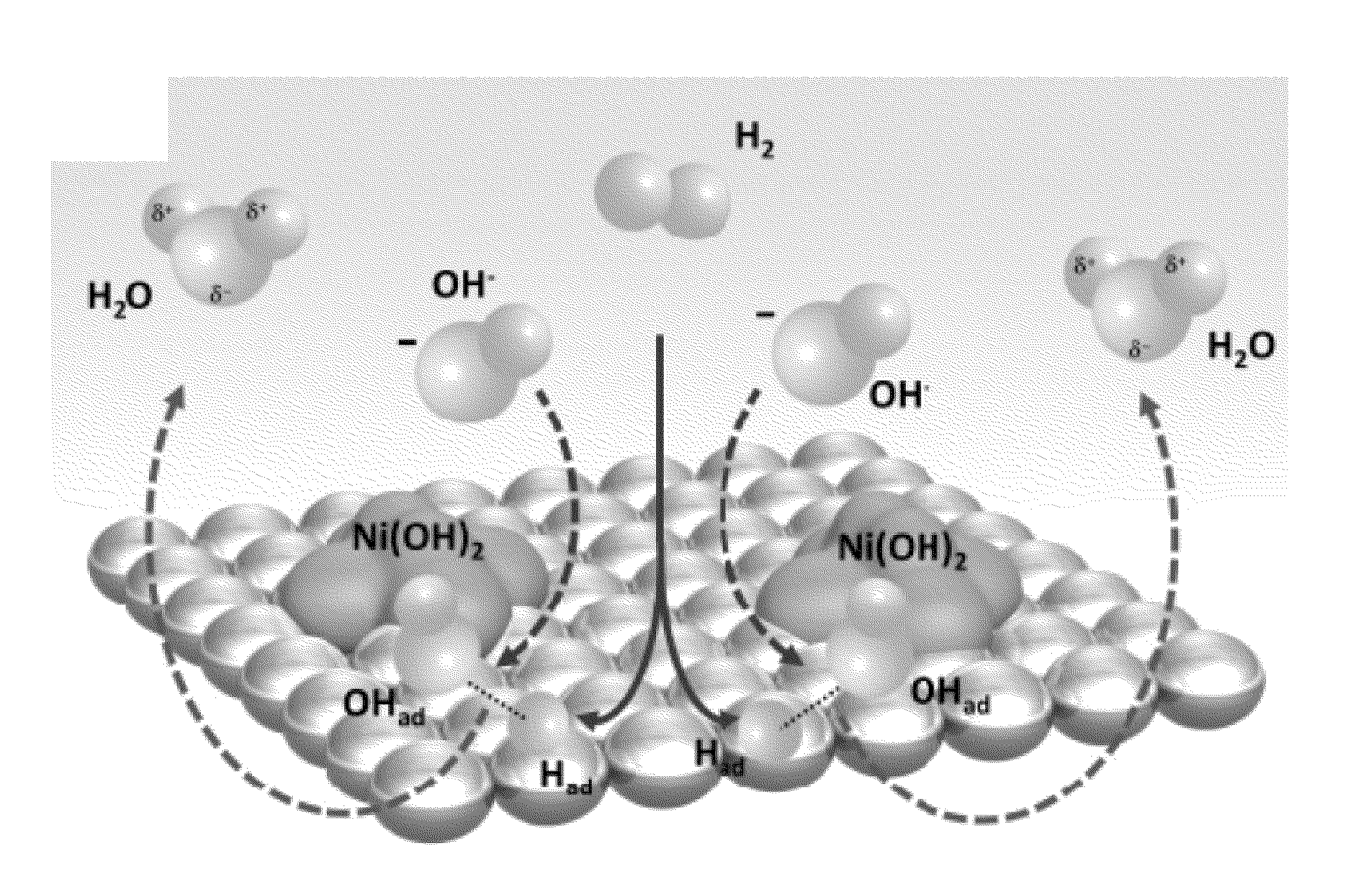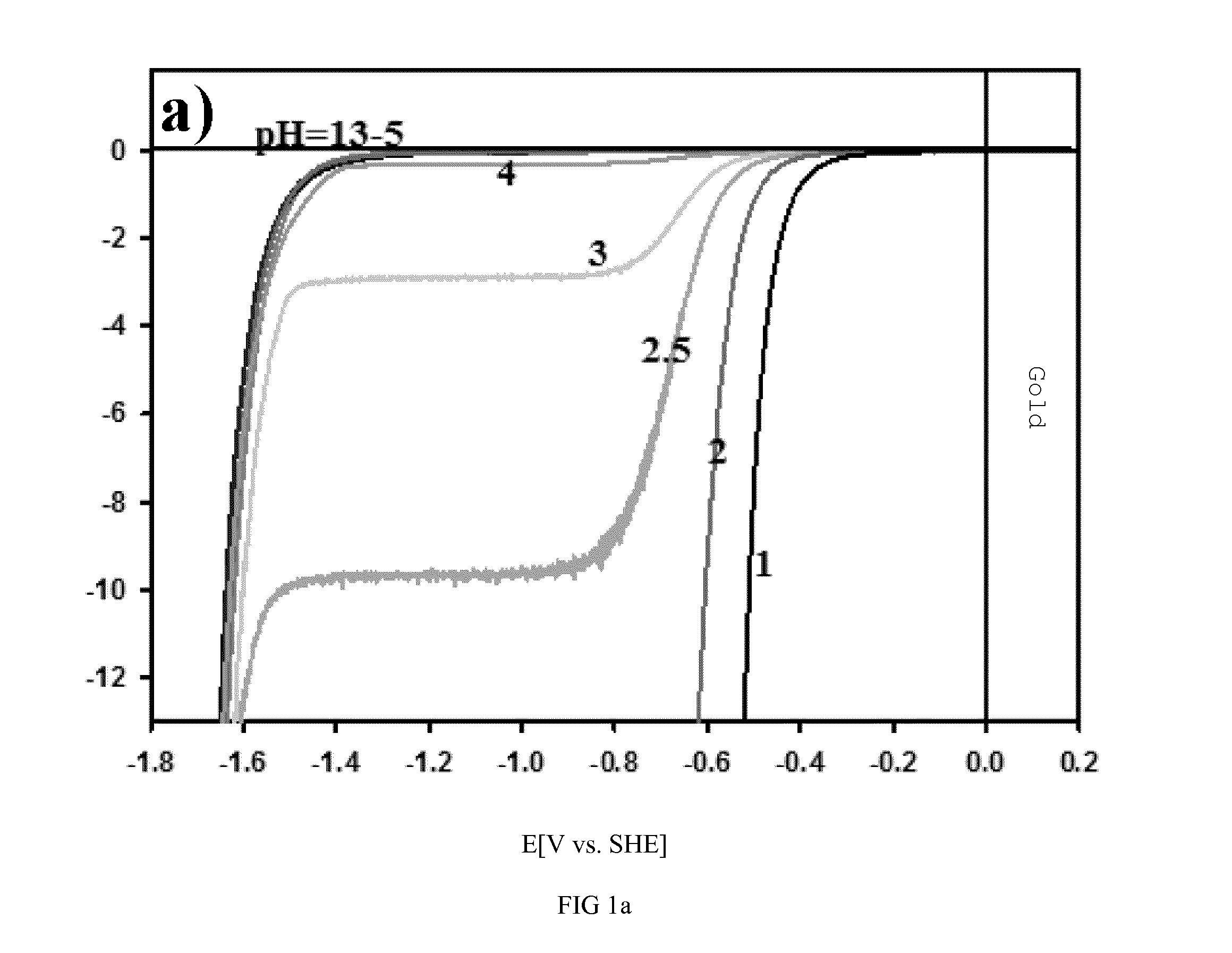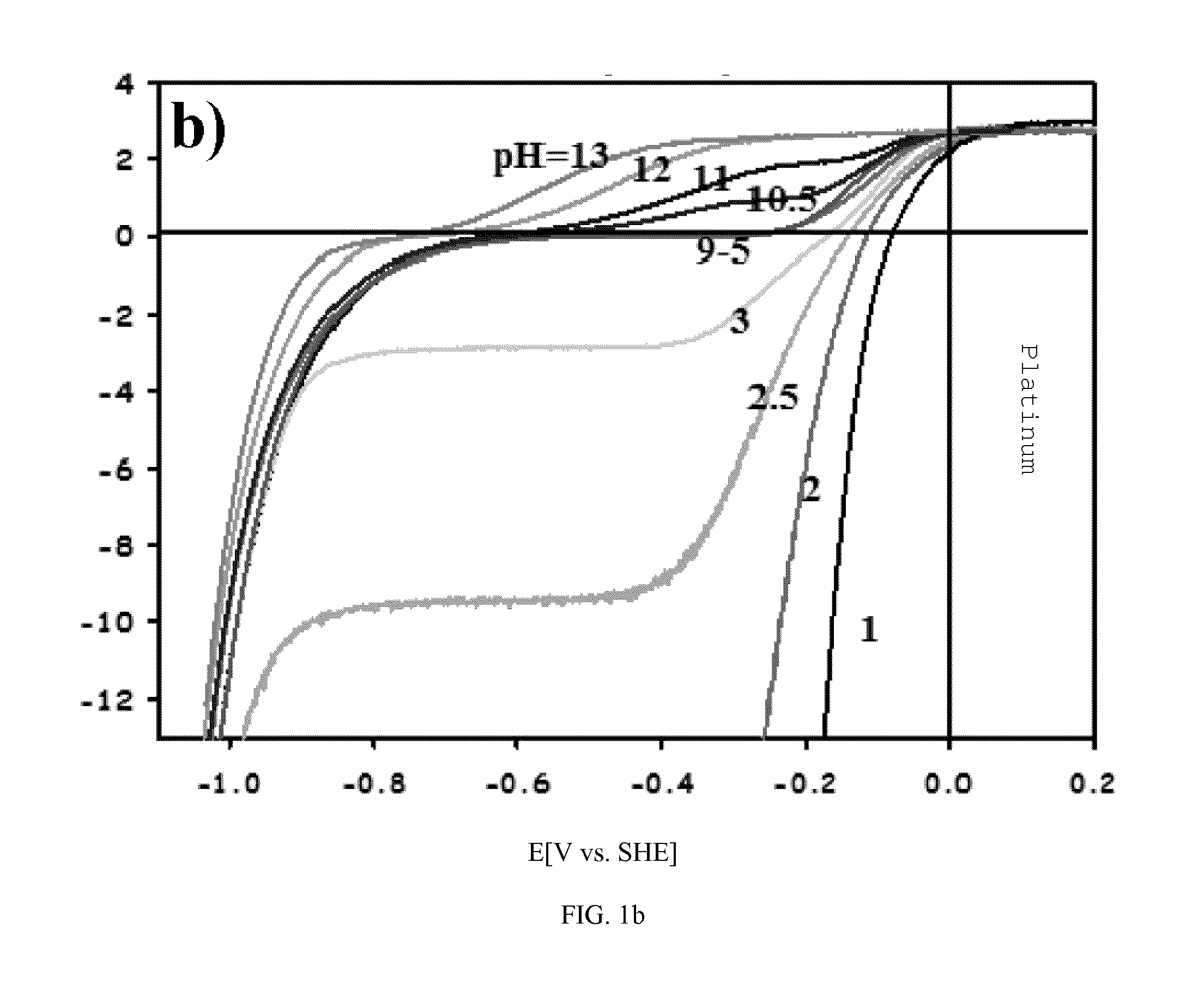Hydrogen oxidation reaction rate by promotion of hydroxyl adsorption
a hydrogen oxidation reaction and hydroxyl adsorption technology, applied in the field of improved hydrogen oxidation reaction catalyst for alkaline fuel cells, can solve problems such as still ununderstood, and achieve the effects of increasing oxophylic activity, increasing activity, and increasing activity in alkaline fuel cells
- Summary
- Abstract
- Description
- Claims
- Application Information
AI Technical Summary
Benefits of technology
Problems solved by technology
Method used
Image
Examples
example i
[0022]The role of pH in HER and HOR was measured by experiment and by theoretical simulation. A series of experimentally measured polarization curves are shown in FIGS. 1a-1c and also simulated polarization curves (see FIGS. 1d-1f) for the HER and HOR on Pt(111), Au(111) and Ir-poly in solutions with pH values spanning acidic (pH=1-4), neutral (pH=4-11) as well as the alkaline (pH=11-13) environments. For the HER shown in FIGS. 1a-1c five distinct features are noteworthy. First, at the same pH values, the current-potential curves for Au(111) are shifted towards higher overpotentials (˜0.4-0.8 V) relative to Pt(111) and Ir-poly, arising from the intrinsic differences in the Au—H2 / Had bond strength. Second, because the rates of the HER / HOR on Pt and Ir are rather fast, at very low pH values we measure mostly the concentration overpotential. Thus, for pH=1-4 any kinetic analysis (reaction mechanism) of the HOR / HER on platinum and iridium is meaningless within ±200 mV (vs. SHE, standard...
example ii
[0024]As described in Example I, in order to obtain insight into the pH-dependent processes that are controlling the polarization curves in FIGS. 1a-1c, a simulation was performed of experimental results as a means of describing how the variations in bulk and near-surface concentrations of both pH-dependent ([H+] and [OH−]) as well as pH-independent ([H2] and [H2O]) components may influence the total current density (i+j) using a simple set of equations. This is given as the sum of four processes described by Equations. 1-4:
H2+2H2O→2H3O++2e− (1)
H2+2OH−→2H2O+2e− (2)
2H3O++2e−→H2+2H2O (3)
2H2O+2e−→H2+2OH− (4)
i=2FK1[H2]x=0[OH-]x=0(1-α1)(FRT(E-E10)-ln[H2E)-2FK1[H2O]x=0-α1(FRT(E-E10)-ln[H2]12(5)j=2FK2[H2]x=0(1-α2)(FRT(E-E20)-ln[H2E)-2FK2[H3O+]x=0-α2(FRT(E-E20)-ln[H2]12(6)
where i and j represent current densities for reactions (2)&(4) and (1)&(3), respectively, F is the Faraday constant and [H2]x=0, [OH−]x=0, [H3O+]x=0, and [H2O]x=0 are activities / concentrations of the reactants at the ...
example iii
High k—Fast Kinetics (Iridium Poly Case) K1,2=1
[0026]Starting with pH=0, by definition the polarization curve intersects the abscissa at SHE=0V. The redox pair determining this potential is H3O+ / H2. The currents for processes 1 and 3 (see Example II) at SHE=0 are the same and equal the exchange current i0. For clarity, the pH values of 0 and 14 are omitted and the pH scale starts at 1 so the first curve intersects i=0 at −60 mV.
[0027]At lower pH values 0-3, the reaction 2 is expected to be completely suppressed due to the low concentration of OH− ions. The polarization curve is composed of currents for reactions 1, 3 and 4 (again see Example II). The latter can only be observed at very negative potentials (0.8) due to the low K1 value, i.e. high overpotential for splitting of the water molecule. The polarization curve at more positive potentials for these pH values is governed completely by processes 1 and 3. Although the current response of the reaction 1 does not change with pH, c...
PUM
| Property | Measurement | Unit |
|---|---|---|
| catalytic activity | aaaaa | aaaaa |
| surface composition | aaaaa | aaaaa |
| catalytic | aaaaa | aaaaa |
Abstract
Description
Claims
Application Information
 Login to View More
Login to View More - R&D
- Intellectual Property
- Life Sciences
- Materials
- Tech Scout
- Unparalleled Data Quality
- Higher Quality Content
- 60% Fewer Hallucinations
Browse by: Latest US Patents, China's latest patents, Technical Efficacy Thesaurus, Application Domain, Technology Topic, Popular Technical Reports.
© 2025 PatSnap. All rights reserved.Legal|Privacy policy|Modern Slavery Act Transparency Statement|Sitemap|About US| Contact US: help@patsnap.com



